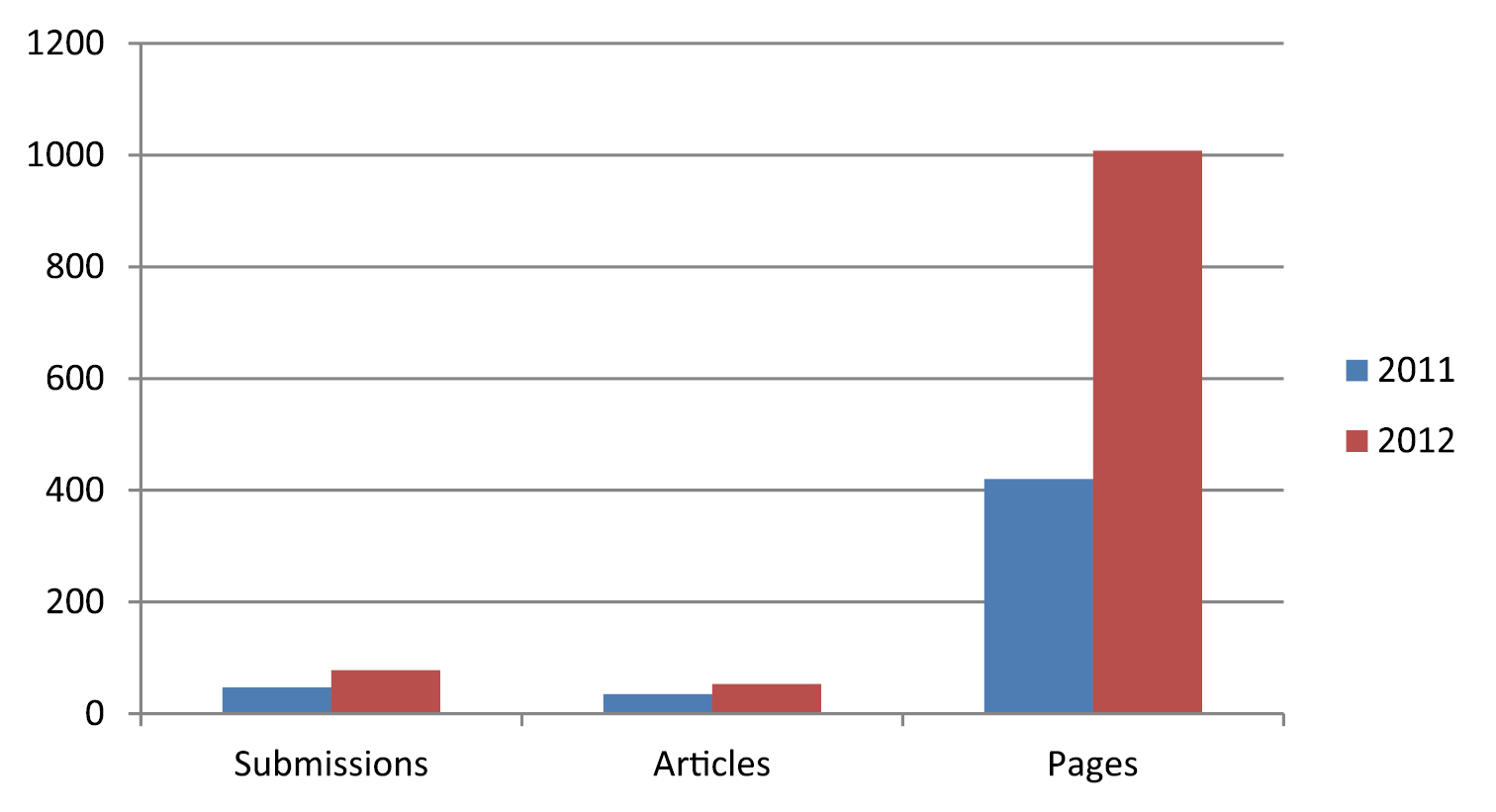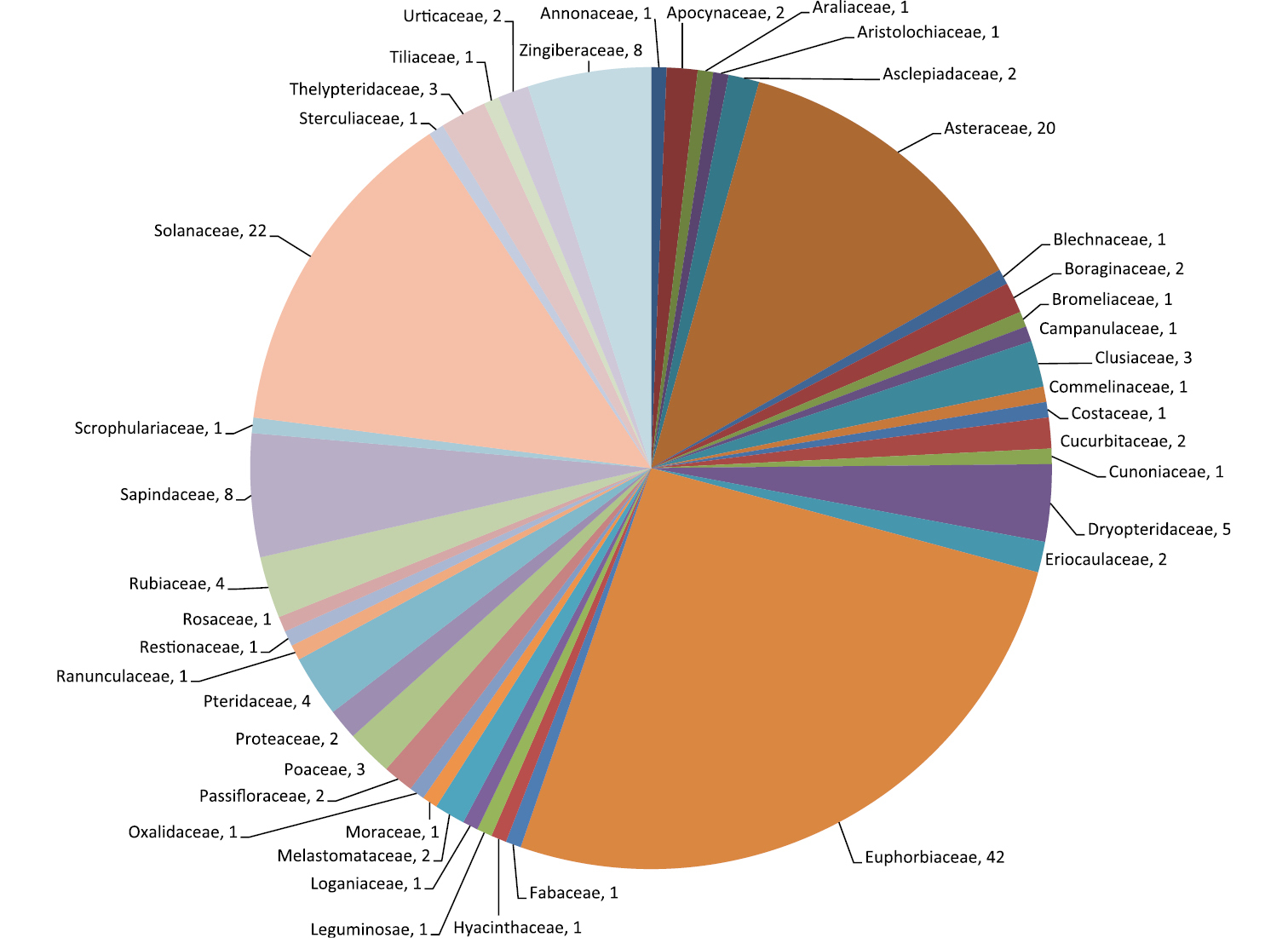






(C) W. John Kress. This is an open access article distributed under the terms of the Creative Commons Attribution License 3.0 (CC-BY), which permits unrestricted use, distribution, and reproduction in any medium, provided the original author and source are credited.
For reference, use of the paginated PDF or printed version of this article is recommended.
“PhytoKeys has been among the first decided
supporters of the open-access idea,
and it has the experience, structures and wits
to combine speed of publication, high quality
standards and sophisticated editing techniques.”
Werner Greuter
OPTIMA Newsletter No. 40
PhytoKeys was launched on the 1st of November 2010 as a novel, peer-reviewed, open-access outlet for plant biodiversity research (
The journal implemented several innovative technologies, such as a domain specific XML markup based on the TaxPub Schema (
PhytoKeys was the first journal to announce the revolutionary changes instituted in the International Code of Nomenclature for algae, fungi and plants (ICN) in a paper published during the actual proceedings of the XVIII International Botanical Congress in Melbourne in July 2011, bringing the news to a world-wide audience (
Since its launch the journal has received 130 submissions in total. Out of this number, 90 articles (1, 456 pages) were published in volumes 1–18. Twenty-one manuscripts have been archived by the system because they were rejected during the review process, withdrawn from consideration or cancelled for other reasons. The yearly growth in numbers of published articles, issues, and number of pages in PhytoKeys has been substantial (Table 1; Fig. 1). The growth in number of published pages in the second year of PhytoKeys exceeds by 120% that of year 1. Starting with 35 articles in 2010–2011, in the second year the journal showed a substantial growth in submissions (66%) and published articles (50%). Based on the analysis of 30 randomly selected papers, the average publication time (from submission to publication) for the first two years of the existence of the journal is 78 days. The period between submission and acceptance is 63 days, and from acceptance to publication 15 days.
Total number of submitted manuscripts, published articles, issues, and printed pages for the first two years of PhytoKeys.
| Year | Submissions | Published articles | Issues | Pages |
|---|---|---|---|---|
| 1 November 2010-31 October 2011 | 47 | 35 | 6 | 420 |
| 1 November 2011-31 October 2012 | 78 | 53 | 12 | 1, 008 |
| Total (until 5 December 2012) | 130 | 90 | 18 | 1, 456 |
Total number of submitted manuscripts, published articles and pages per year in PhyltoKeys.
Altogether, four new genera, one subgenus, 90 species, and one variety have been published in the journal since its launch, or 96 new taxa in total (Table 2). The number of new combinations (55) and new names (10) published for the same period is considerable (Table 3). Thus, the number of all nomenclatural novelties published in PhytoKeys for this short period totals 161. These new taxonomic contributions encompass 42 vascular plant families, with a predominance in the families Euphorbiacea, Solanaceae and Asteraceae, with 42, 22, and 20 contributions, respectively (Fig. 2).
New taxa published in PhytoKeys from 1st November 2009 to 6th December 2012 that have been registered in the International Plant Name Index (as per 6th December 2011, data provided by Christine Barker, IPNI).
| All ranks | Genus rank | Infrageneric rank | Specific rank | Infraspecific rank | |
|---|---|---|---|---|---|
| 2010 | 11 | 1 | 0 | 10 | 0 |
| 2011 | 41 | 2 | 0 | 38 | 1 |
| 2012 | 44 | 1 | 1 | 42 | 0 |
| Total | 96 | 4 | 1 | 90 | 1 |
Other nomenclatural novelties published in PhytoKeys for the entire period of its existence (data provided by Christine Barker, IPNI).
| New combinations | New names | |||
|---|---|---|---|---|
| All ranks | Specific rank | Infraspecific rank | Specific rank | |
| 2010 | 1 | 1 | 0 | 0 |
| 2011 | 43 | 43 | 1 | 8 |
| 2012 | 11 | 5 | 6 | 2 |
| Total | 55 | 49 | 6 | 10 |
Taxonomic distribution by family of the published nomenclatural novelties in PhytoKeys.
PhytoKeys has always been engaged with open data publishing. One of the pioneering methods for data publishing converted a conventional floristic checklist, written in a standard word processing program, into structured data in the Darwin Core Archive format (
The first data paper in PhytoKeys was published in May 2012 by
The top ten papers in PhytoKeys through the 5th of December 2012 have been accessed 55, 502 times (Table 4). The article by
The top ten most viewed articles of PhytoKeys according to the PhytoKeys website counter accessed on the 5th of December 2012.
In order to promote plant taxonomy, Pensoft’s Public Relations office has initiated a new service aimed at facilitating our authors in promoting their research among the general public and science media. Since its launch, altogether 17 international press releases have been prepared and distributed through EurekAlert!, one of the world largest online distributors of science news, supplying information to more than 7, 500 mass media and independent science journalists, and Pensoft’s own channels (see Table 5 for the top ten most accessed press releases of PhytoKeys articles). At the top, with approxmately 5, 000 views, is the press release of the article by
The top ten most accessed press releases of PhytoKeys articles posted through EurekAlert!. The counter registers only downloads from EurekAlert!, mostly by science media and journalists. The actual number of readers is most likely much higher than this number.
In conclusion, PhytoKeys, along with its 'brother' journals Zookeys and MycoKeys, continues to evolve its editorial workflow, constantly implementing new and improved publishing and dissemination technologies, thus always being on point for digital biodiversity science. We would like to thank all of our authors, reviewers, subject editors, readers, and journalistic followers without whose support PhytoKeys would not have become such a successful journal in just two years time! We also thank Christine Barker (IPNI) for providing information on the nomenclatural novelties published in PhytoKeys that have been registered in IPNI.

